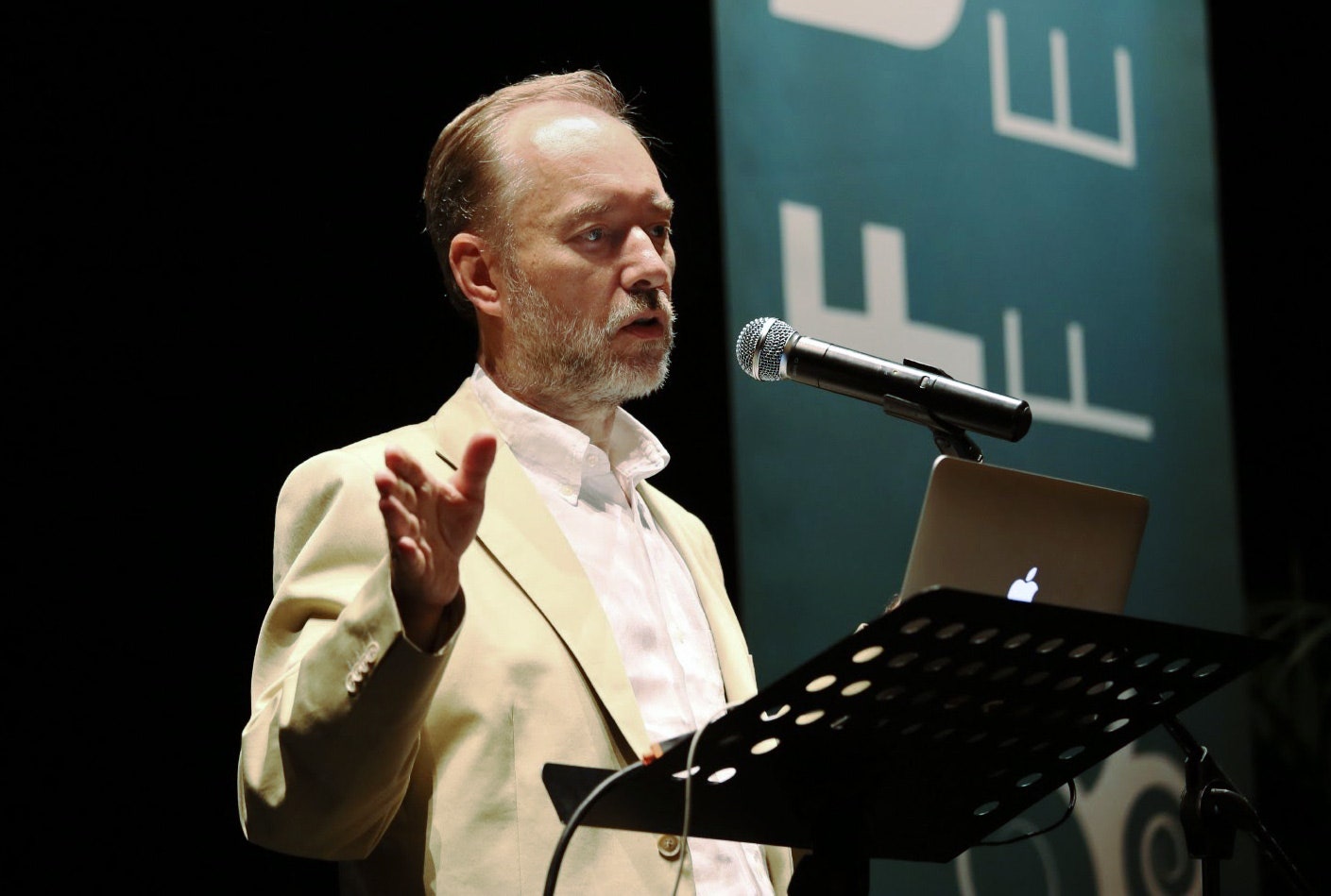One explanation for the same neural framework evolving in such different brains is simply that it’s an efficient solution to a common computational problem. “It’s actually exciting, because it suggests that it’s just the best way,” Avarguès-Weber said. Maybe there are physical or other internal constraints on how the brain can process zero and other numerosities. “There could be a very limited number of ways in which you can build up a mechanism to encode numbers,” Vallortigara said.
Giorgio Vallortigara, a neuroscientist at the University of Trento, and his colleagues have seen indications that zebra fish have an area in their brains that corresponds to numerosity.Courtesy of Giorgio Vallortigara
Still, just because crows and monkeys seem to be encoding an abstract concept like zero in the same way does not mean that it’s the only way. “It could be that different solutions have been invented during natural history, during biological evolution, to perform similar computations,” Vallortigara said. Researchers will have to study other animals to find out. In a paper just published in Cerebral Cortex, for instance, Vallortigara and his colleagues identified a brain region in zebra fish that seems to correlate with numerosity, although they haven’t yet tested the animals’ ability to assess zero.
Bees might also hold some surprises as the foundation for their numerosity becomes better understood. In a study published last year, MaBouDi and his colleagues “showed that the bumblebee counts by a fundamentally different strategy” when presented with up to four objects, he said. He thinks their findings hint that the mechanisms underlying honeybees’ grasp of numerosities, including zero, might indeed be quite different from what’s been observed so far.
But perhaps the more fundamental question about numerical abstraction in the brains of diverse animals isn’t how the ability works but why it exists. Why should animals have to recognize specific quantities at all? Why has evolution repeatedly made sure that animals can understand not just that four is less than five but that “four squares” is in some way conceptually the same as “four circles”?
According to Vallortigara, one reason might be because arithmetic ends up being so important. “Animals continuously have to do arithmetic. Even simple animals,” he said. “If you have an abstract representation of numerosity, this is very easy to do.” Abstracting numerical information allows the brain to perform additional computations much more efficiently.
That’s perhaps where zero fits in as well. If two predators enter an environment and only one leaves, the area remains dangerous. Rugani speculates that an animal needs not only to be able to subtract in this situation, but also to interpret zero as “the result of previously performed numerical or proto-numerical subtraction”—which the animal can then associate with particular environmental conditions. In this case, “whenever you reach the lowest value, which is zero, the environment is safe,” Rugani said. When foraging for food, zero can map onto a need to search in a different location.
Nieder, however, isn’t convinced. He doesn’t see a pressing need for animals to understand zero as a numerosity, since viewing it as an absence should usually suffice. “I don’t think that animals use numerosity zero as a quantity in their day-to-day living,” he said.
An alternative possibility is that an understanding of zero—and numerosity more broadly—might simply have emerged from the brain’s need to recognize visual objects in the environment. In 2019, when Nieder and his colleagues trained an artificial network to recognize objects in images, the ability to discriminate numbers of items arose spontaneously, seemingly as a byproduct of that more general task.
A Glimpse of Math’s Building Blocks
To Nieder, the presence of talents for numerical abstraction in animals indicates “that there is something already laid out in the brains of these animals that may constitute an evolutionary basis for what in us humans can develop into a full-blown understanding of the number zero.”
But impressive as the animals’ accomplishments are, he emphasized that there are critical differences between how animals have been shown to conceptualize numerosity and how humans do it. We don’t just understand quantities; we link them to arbitrary numeric symbols. A set of five objects is not the same as the number 5, Nieder said, and the empty set is not the same as 0.



